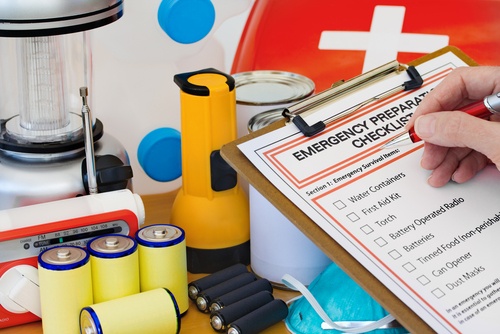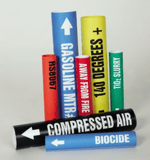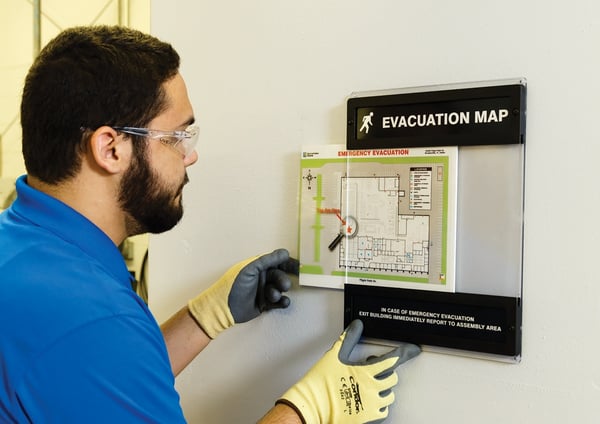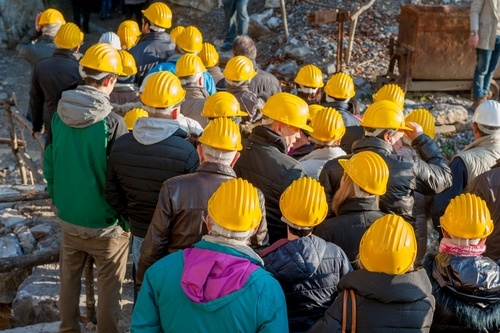What’s Your Facility’s Emergency Plan?
Every year, somewhere around the country, a natural disaster strikes. We all hope it never comes to our neck of the woods. But if it does, is your facility prepared?
Hurricanes Irma, Maria, Harvey and Andrew. Any of those names ring a bell? What about the 2016 West Virginia Flood? The 2013 Colorado Floods. The Great Smoky Mountain wildfires of 2016. The list goes on and on.
The cost to American towns and businesses? Astronomical.
The loss of human life? Catastrophic.
The problem is that we tend to talk about how lives could have been saved and destruction avoided after the fact. Then, we conveniently forget about it until the next time. Let’s get ahead of it, shall we?
How can we best protect our employees and our facilities in the event of disaster? Here are a few tips for before, during and after a disaster strikes.
1. Have a Disaster Plan Before the Chaos
If you don’t have a disaster plan in place, there’s no better time than now to figure it out. Maybe you do have a thought process of how you would like that disaster plan to look.
What does it look like? Have you put pen to paper?
The truth is that all natural disasters are not created equal. Some you may have plenty of time to prepare for — like a blizzard. And, some come quickly out of nowhere — like a tornado. That’s why you must consider all scenarios and have a plan for each. The first question you need to ask yourself is, “Where do you and your workers go to escape?” The next thought should be what to pack in a disaster kit.
Sometimes, there are major power outages that can last for days or weeks, or longer. Stores and banks may remain closed for some time. That’s why it’s so important to keep your disaster preparedness kit fully stocked.

Keep these supplies in your Disaster Preparedness Kit!
It’s impossible to predict just how long a state of emergency will last, so use your best judgement when stocking these essential items!
• Water
• Food
• First Aid Kits (including an AED)
• Emergency Lighting
• Weather Radio
• Whistle
• Fire extinguisher
Whether you get the heck out of Dodge like in the case of a hurricane, or you escape a tornado in a safe room — everyone must know WHERE TO GO.
When you’re creating your disaster plan, remember one of the most important things is to communicate these plans to everyone in the vicinity. The most effective and efficient way to do this is through safety signage.
No, not just making sure your EXIT signs are properly functioning — but, hey that’s important too! Here’s how signs can help you weather the storm.
Set Up Visual Cues for Emergency Situations
 |
A. Map Holders: Instead of leaving maps in some desk drawer that no one knows about, map holders can be placed strategically throughout your facility. They can also be photoluminescent, so they can be spotted no matter the visibility.
|
 |
B. Safety Signs and Tags: No matter what the danger, signs can communicate the risk quickly and clearly. Whether the danger is an exposed electrical wire, gas, muster and assembly points, traffic warnings, PPE requirements or emergency notices — you must make sure everyone is always on the same page, emergency or not. You can even get some glow in the dark safety signs, wouldn’t that be cool?
|
 |
C. Floor Tape: Want a fool-proof way of marking out an evacuation route? Use brightly colored floor tape and signs to identify warnings, traffic zones and walkways. In the event of fire, smoke or low visibility, people will be able to clearly identify safe escape routes.
|
 |
D. Pipe Markers for Gas and Steam: You’d be surprised how many times this is overlooked. Yet, it’s kind of a good idea to know what hazards are running through the pipes around you, especially in the event of an emergency. So much of a good idea that ANSI requires proper marking of pipes.
|
Here’s a quick reference from EHS Today on pipe marking requirements.
Safety Tip: By creating a visual workplace, you can reduce miscommunication not only in the event of an emergency, but during normal operation as well. In fact, it’s proven to increase efficiency, minimize waste and improve safety.

2. During the Storm
Safety and shelter are among your top priorities when you’re in the middle of an extreme weather event. Where you seek shelter is going to be different for almost every “act of God”.
Here are some best practices to remain safe during emergency events.
Seek shelter during weather emergencies.
Tornado: Go to predetermined shelter area (safe room, basement, storm cellar or lowest level of building). If that’s not an option, go to a stairway or the center of an interior room on the lowest level.
Stay away from corners, windows, doors and outside walls. Use pillows, blankets and cushions (or arms at a minimum) to protect your head and neck.
Flood: Seek highest level of building or highest ground. Stay off bridges over fast moving water. Don’t walk, swim or drive through flood waters — 6 inches of water can knock you off your feet and 1 foot can sweep away your vehicle. Evacuate when told.
Hurricane: Avoid both the eye of the storm and the right side of the storm where winds will be the most damaging.
Pay close attention to local watches and warnings. Avoid high levels of a building as the wind force is stronger there. Go to a wind safe room. If one isn’t available, seek shelter in a closet, small interior room or hallway on lowest level.
Lightning: Stay away from outside doors and windows. Stand away from concrete walls and avoid lying on concrete floors. Make sure all doors and windows are closed to prevent wind damage.
Winter Storm: Find an area that heat can be conserved — interior rooms or basements are best options. Look for an area of a building that gets the most sunlight and protection from cold winds. Seal off rooms by closing doors and window coverings.

Safety Tip: Know when it’s time to EVACUATE! Pay close attention to local authorities. All staff should have a bag ready with medications, prescriptions, insurance, banking and personal identification. Most importantly, LEAVE when they say it’s time to leave.
3. Post-Disaster Protocol
So the storm is over. Think it’s safe to go skip-to-your-loo and get back to work? Not so fast!
The storm may have passed, but you could be left to deal with hazards from the aftermath.
When you leave your safe zone, make sure to check for downed power lines, gas leaks and other hazards. Are all walkways and exits clear for safe travel? Are the EXIT signs clearly visible?
You’ve weathered the storm, you don’t want go down because you flipped the power switch on a piece of equipment too soon. Having equipment like gas detection devices charged and calibrated at all times means the second the storm passes, you can determine the level of safety in the aftermath.
Mark off hazards to warn others of dangers. Have a piece of machinery that needs to be inspected post-apocalypse? Discover a pipe that’s leaking a nice dose of natural gas? No worries. Just place safety tags on the item in question to make sure someone doesn’t unwittingly electrocute or gas themselves during post storm cleanup.
Safety Tip: After a weather emergency people may be in a state of panic and may miss important warnings. Along with signs, tags and markings, use equipment that can restrict access to danger zones altogether. Place barricades around areas found to be unsafe or in need of service or repair.

Is that all you need to do to prepare? Heck No!
Ok, great. Now we've got the plan, we’ve got the signs, equipment and supplies. Now what? Well, you wouldn’t send your special teams out on the field without a few practices under their belts, would ya?
Yeah, that’s right. Practice.
Run through your plans on a regular basis. Make sure everyone understands the plan and knows how to communicate with each other. Designate a point person who’ll be able to lead, take head counts and ensure safety measures are followed. This person should be able to take control of a bad situation and not flake out.
Choose wisely.
New hires should be made aware of plans and procedures in the event of an emergency. And, don’t forget about your veteran workers. That’s why annual or semi-annual drills can keep safety top of mind. Keep your standard operating procedures and emergency plans accessible and offer regular preparedness training. No one wants a natural disaster to strike, but if it does — isn’t it better to be prepared?
Your number one goal as an employer during an emergency event is safety. Safety of your employees and safety of your facility.
Don’t forget that you’re also human, so you’ll also be concerned about the safety of your own loved ones. That’s why having a clear plan in place before disaster strikes is so important. We can get distracted about a million other things and overlook major protocol, especially if we aren’t prepared.
If you ever need help figuring it all out, just ask. It’s what we do.








